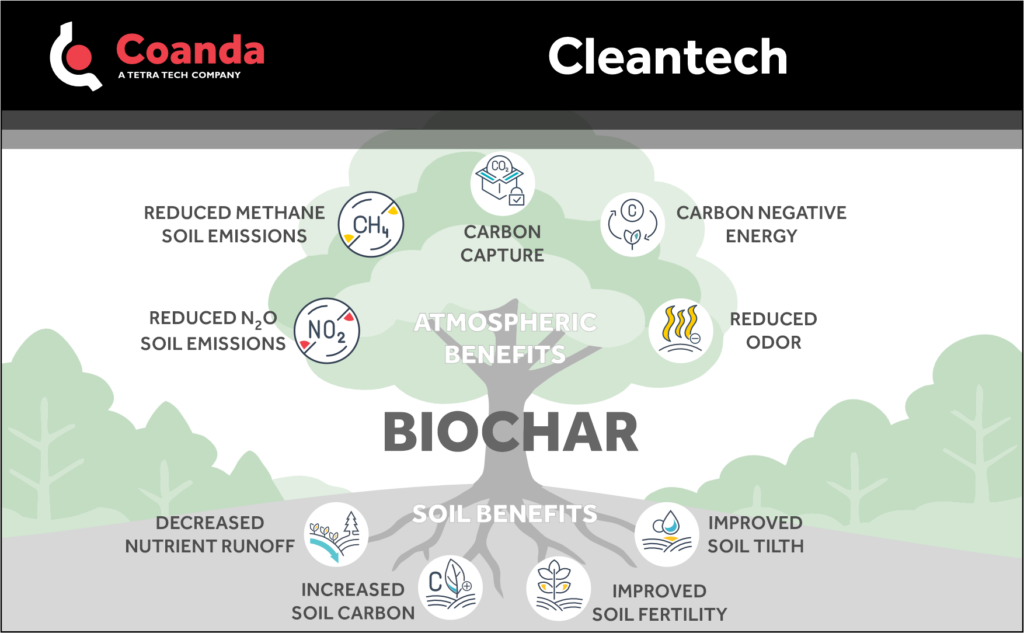Biochar Burial: Evaluation of Long-Term Carbon Sequestration and Soil Enhancement Potential
Posted on July 2, 2025 Cleantech
Biochar is a carbon-rich material produced through pyrolysis of biomass, whereby plant-residue, manure, animal carcasses, and other organic waste materials are heated in an environment free of oxygen (or with insufficient oxygen to support complete combustion). It has garnered attention as a versatile tool for both CO2 abatement and soil improvement. The practice of biochar burial—incorporating biochar into soils—therefore presents an intriguing approach to both long-term carbon sequestration and sustainable agriculture.
From a climate perspective, biochar burial appears to offer a robust means of sequestering carbon. Unlike many other organic CO2 remediations, the aromatic compounds in biochar resist microbial decomposition. This allows them to remain stable in the soil for longer durations, thus slowing CO2 emission that would otherwise occur due to natural decay of the biomass.
As with any other potential carbon sequestration technology, the first step is to evaluate whether the process makes thermodynamic sense. Given approximate values of biomass enthalpy of pyrolysis (1 MJ/kg), sensible heat (1 MJ/kg, for pyrolysis at 400 C) and stable carbon content of the product (approx. 50%), a preliminary analysis, using natural gas as the heat source (LHV = 50 MJ/kg), suggests an upper limit of about 10 kg of carbon sequestered per kg of carbon emitted into the atmosphere contained in CO2. This analysis does not consider heat exchange or mechanical losses, which will undoubtedly decrease yields. Nonetheless, the margin is significant enough to justify further investigation.
A second crucial step is to determine the potential sequestration and storage capacity. Recent assessments suggest that biochar burial could sequester between between 0.5 Gt and 2.5 Gt (gigatons) of CO2 per year. For reference, global CO2 emissions from fossil fuels are roughly 35-40 Gt annually. Thus, biochar could potentially offset up to 7% of current emissions if widely deployed. Therefore, even under the best of circumstances, biochar burial represents only part of a larger solution.

Finally, we examine the economics of large-scale deployment. According to a 2024 study by a group of researchers in China, the domestic cost of biochar burial levelized to approximately $90/t (net CO2). The cost of removing 1.0 Gt/yr, which researchers believe to be a realistic objective, would therefore be in the region of $90 billion annually. While that is an enormous expense to offset 2-3% of global CO2 emissions, it is eclipsed by the cost of direct air capture (DAC), currently estimated at about $500/t. For reference, the cost of offsetting global emissions at $90/t is $3.5 trillion, whereas at $500/t, the cost is about $20 trillion. Both of these figures are comparable to the gross domestic product of major global economies (UK: $3.4 trillion, 6th; China: $18 trillion, 2nd).
In addition to benefiting the climate, biochar also has a positive effect on soil biochemistry. Its porous structure enhances soil aeration and water retention, while its surface chemistry provides sites for nutrient adsorption. These can increase crop yields and reduce reliance on fertilizers, potentially further reducing greenhouse gas emissions related to production and use of fertilizers.
In summary, biochar burial represents a robust, scalable, and relatively low-cost intervention for long-term carbon sequestration and improving soil health, although widespread adoption is constrained, primarily by feedstock availability. Integrating biochar as part of a larger climate mitigation solution, however, is expected to accelerate progress toward global carbon neutrality goals.


